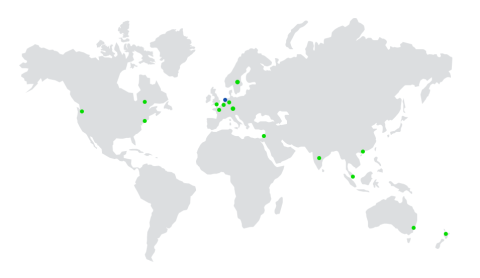
Many universities are eager to decrease their campus carbon footprint. However, reducing carbon dioxide (CO2) emissions is challenging given the myriad of factors influencing carbon emissions, such as transportation, waste management, and energy consumption. Interestingly, even cowse seem to have a adverse impact on the greenhouse effect. So, understanding CO2 emissions is extremely important. But how can universities collate and analyse the available information to gain the insights needed to implement improvement measures?
The issue of sustainability has been high on the agenda of many bodies for years, including educational institutions. That’s why government, colleges and universities have joined forces to reduce carbon dioxide emissions significantly before 2020. By taking on a greener image, universities also hope to attract students.
Charting CO2 emissions
The question is what should be done to reduce carbon emissions. Often the challenge here lies in choosing just the right projects, which will contribute most to the objective. Naturally, the results of these projects also have to be monitored and assessed. A whole range of factors needs to be taken into consideration. For instance, the energy consumption of each type of university building can vary enormously. A lecture hall uses relatively little energy, for example, while the consumption of a research laboratory is relatively high.
This diversity makes it difficult for universities to benchmark, because different types of buildings can’t easily be compared. So how then can they decide on the right CO2 approach? To start, it makes sense to calculate the total ‘footprint’, where all factors that emit CO2 are charted. What doesn’t help is that this information is often collected in different places, or worse still, it isn’t tracked at all. Then it simply becomes impossible to come up with a reliable overall figure. Yet this calculation is really needed in order to choose the right approach to reducing carbon emissions. An IWMS offers a solution for measuring and monitoring energy consumption, CO2 emissions and their related costs, in a structured way.
Three important pillars
There are three specific pillars on which universities should concentrate when reducing emissions:
- Operational management – Amongst other things, this concerns making buildings more sustainable and reducing energy consumption. Being able to meet a specific energy label or achieve a hallmark are important motivators here.
- Waste – For example, reducing waste by tightening up the arrangements with suppliers such as the caterer or the campus shops. One example is creating (free) drinking-water outlets, so that water in plastic bottles no longer needs to be sold.
- Mobility – Around half of the carbon emissions related to universities are attributable to transport. Consider for instance the students who travel to the university, or researchers attending conferences. Major wins can be achieved here.
As for reducing those carbon emissions from cows? Research has shown that changing the composition of cattle feed can bring down these emissions. Here (agriculture-related) universities can also play a role. This is because it’s not just by reducing their own CO2 emissions, but also by conducting scientific research, that universities can make a significant contribution to reducing worldwide greenhouse gases.





















